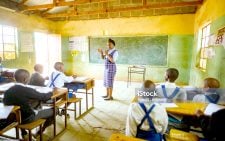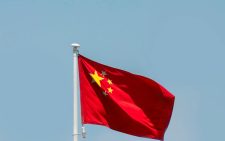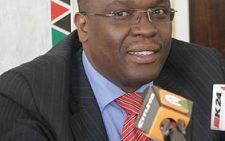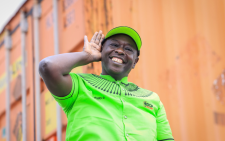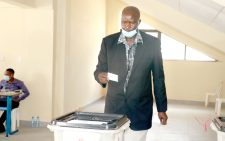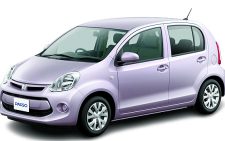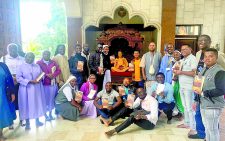A trek for Rwanda’s mountain gorillas
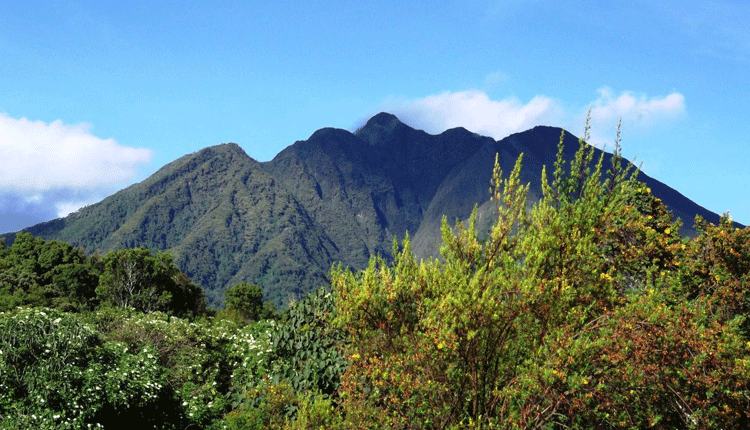
On Wednesday October 22, at around 6.30am, a flurry of activities are taking place.
Tourists, tour guides, conservationists and nature lovers are getting ready for a trek of a lifetime: meeting the mountain gorillas of the Virunga volcanoes.
For some, this is the first time to do this; for others, it could be the fifth or the hundredth, but it still feels like the first time.
In the Volcanoes National Park, which hosts Mount Bisoke, Sabinyo, Gahinga, Muhabur and Karisimbi, which is the highest standing at 4,507 metres high, and is home to these endangered primates.
There are 14 families of the primates in the park, each with a silverback, a number of females and during this season, baby gorillas.
Our guide, Ignatius Itangishatse, breaks down our trek. Once we get to the foot of the mountains, we will leave our vehicle and start the walk, which will take us through some farms and towards the park entrance.
“We will meet one of the trackers, because besides mountain gorillas, we have other animals, including buffaloes who are not really friendly,” he tells us, assuring us of our safety.
As we go up the mountain, with Sabinyo to our right, Ignatius provides us with titbits about the behaviours of the mountain primates.
“Their movements depend on availability of food. If they have a lot of food, they don’t eat for long.
They take breaks of about one hour before they move again to eat for about two hours and then take a break,” he explains.
He adds that they keep up with the sun and make sure they have enough food to eat to last them all night. They then make a nest for the night.
Along the way Ignatus shows us some plants the gorillas eat, including spiky ones, which the animals peel to avoid being pricked.
Interestingly, gorillas get their water from plants and could go for months without drinking water from a source such as a river or lake.
Meeting the gorillas
Once we are in the park, we find other trackers who inform us where the gorillas are. Before our next step, Ignatius is quick to give us instructions that we must follow.
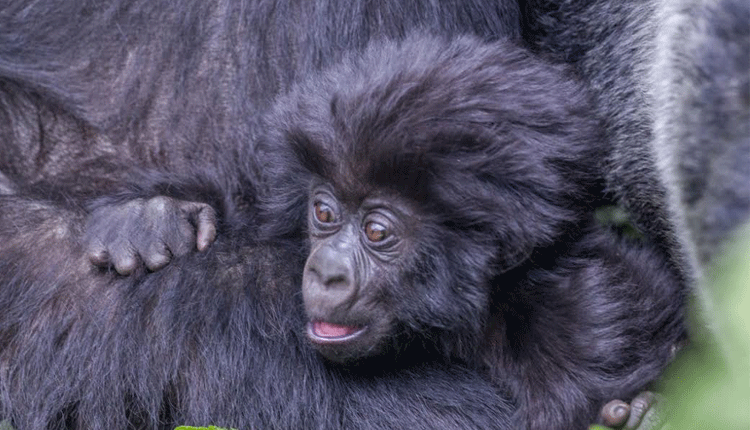
One, we must have our masks on all the time to avoid passing on any respiratory diseases to the gorillas.
Two, we must stay as far as seven metres from the primates, which are allowed to come to close to us on their own volition.
Three, we must listen to his every instruction while close to the gorillas for our own protection. He said he will tell us what to do as per the behaviour of the animals.
The journey takes us about one hour and a half to reach the gorillas, and it’s all worth it.
We meet the Muhoza family of gorillas. It is made up of 11 adults and two new babies. The silverback is laying down, with one of the females grooming him.
We watch, fascinated, for about 40 minutes as the individual gorillas play with each other and climb up and down the trees.
The trek is part of activities ahead of World Gorilla Day, celebrated every year on September 24, which is also the day Rwanda holds its Kwita Izina ceremony where baby gorillas are given names. Kwita Izina means ‘to give a name’ in Kinyarwanda.
The event is modelled off Rwandan culture from centuries ago in which Rwandans named their children in the presence of their families and friends. In this way, the individual animals are given value, and are tracked to mark the progress of their lives.
This year’s edition saw individuals from all over the world, including conservationists, global leaders and football players name 24 babies.
From Muhoza family, which we saw, two babies were named: Kundumurimo, which means devoted, named by Clementine Uwamahoro, the Conservation Technology Officer at Akagera National Park. He was born on January 7, this year to Inkubito.
The name was selected to acknowledge the country’s future generations as custodians of conservation.
Beauty of the mountain
The second is Nshongore, which means elegant, named by Paris Saint-Germain first team players Angel di Maria and Marquinho.
Also male, he was born on February 26 this year to Turiho. His name was selected to show the beauty of the mountain gorillas.
At its 17th edition the event has one major aim: to conserve Rwanda’s natural resources and to empower communities to take part in the efforts.
The process involves a revenue sharing formula in which 90 per cent goes to the government and 10 per cent is invested into the community through their cooperatives at local levels.
In Gishwati-Mukura National Park, which was last year classified as a biosphere by United Nations Educational, Scientific and Cultural Organisation (UNESCO), the community has put up both a honey processing factory and a milk collection point from the proceeds of the tourism revenue.
Placide Nkurunziza Niragire, one of the park wardens, says the process started with the mapping of the area to identify how many people are living around the park. They are about 250,000 people.
“The community depends on agriculture and animal husbandry, but they need to change their lifestyle to benefit from the tourism industry,” he says.
In the past, beekeepers used to have keep their hives in the park and when it came to harvesting, they would use smoke. Inadvertently, they would cause fires in the forest.
“With mobilisation, they now know they can put their beehives outside the park to avoid such incidences,” Placide explains.
For the cattle farmers, they are allowed to graze their animals in the buffer zone. All these farmers are part of cooperatives through which the funding from tourism is distributed.
Consequently, when the community wants to start projects, they easily work with the park and thus benefit from tourism.
These efforts, according to Placide, have improved the status of the park, which was once riddled with illegal activities, such as mining and glass cutting.
Rwanda is also on a mission to expand the Volcanoes National Park in bid to increase the home of the mountain gorillas.
The expansion of the park aims to create ecological and economic value that will contribute to our country’s socio-economic transformation, and provide new opportunities for communities living around the park,” said Zephanie Niyonkuru, the deputy CEO of the Rwanda Development Board during the Kwita Izina event.
